Some photographs from the Western Electric archives
Quelques photographies provenant des archives de Western Electric
Einige Fotos aus den Archiven von Western Electric
Click on the photos to enlarge them. • Cliquez sur les photos pour les agrandir. • Klicken Sie auf die Fotos, um sie zu vergrößern.

Experimental Coding Tube.
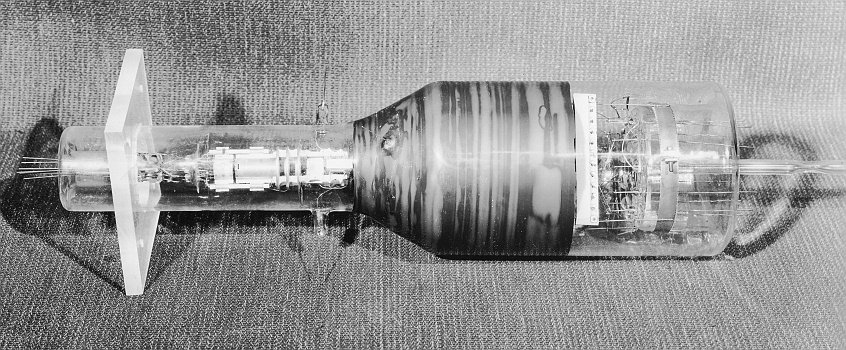
Experimental Coding Tube.
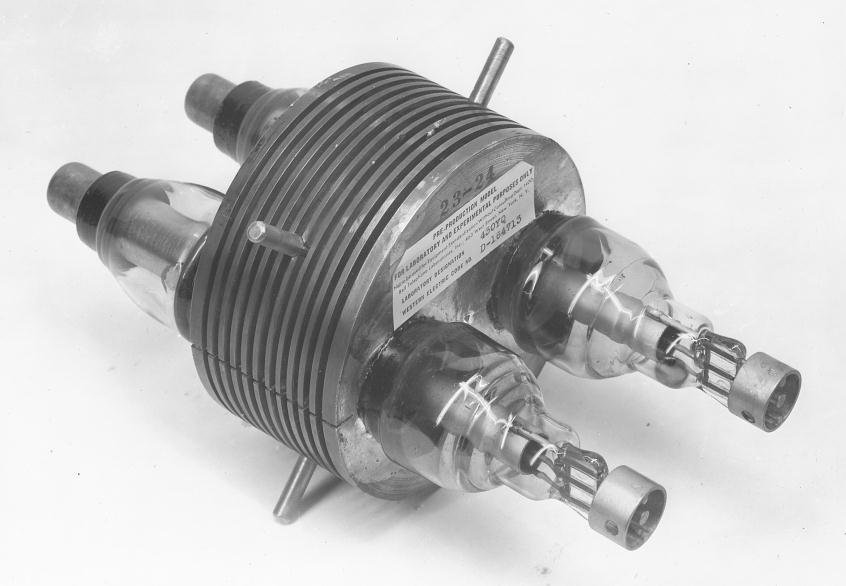
The D164713, a developmental twin triode UHF oscillator.
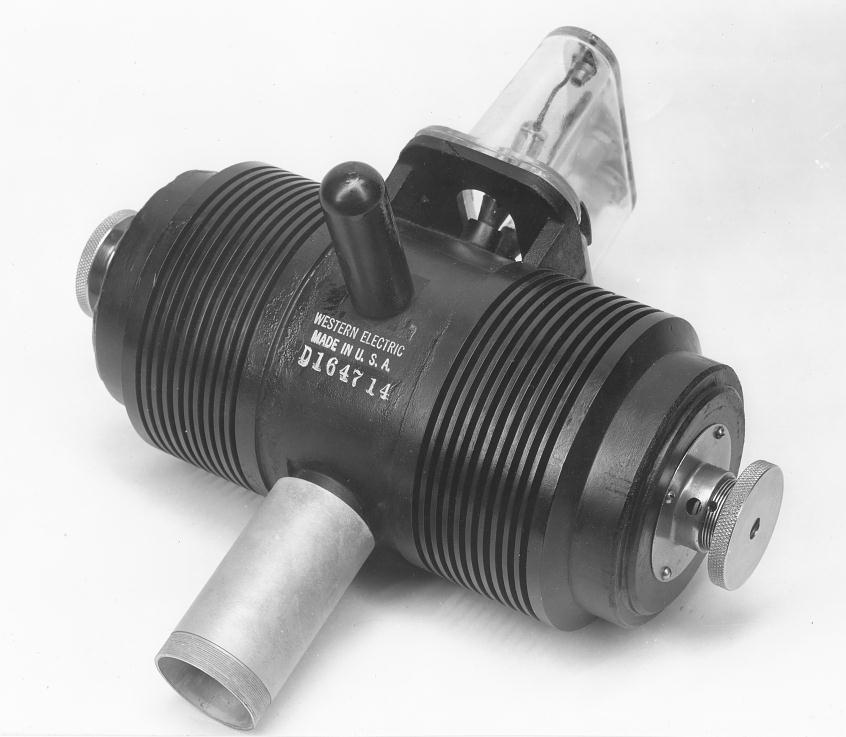
The D164714, a developmental twin triode UHF oscillator (1943).
The D164714 was subsequently coded 7C22 and manufactured in small quantities.
The 7C22, a metal-cased oscillator with integral resonators, roughly comparable to the Signal Corps / Eimac VT-158 “Zahl” tube, was intended for a Navy long-range search radar that apparently didn't reach production.
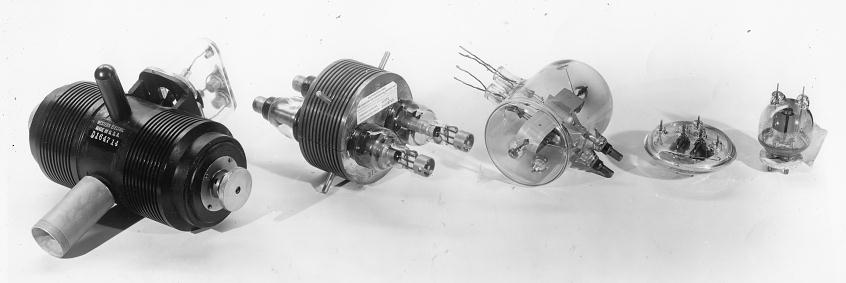
D164714, D164713, and three other developmental UHF tubes.
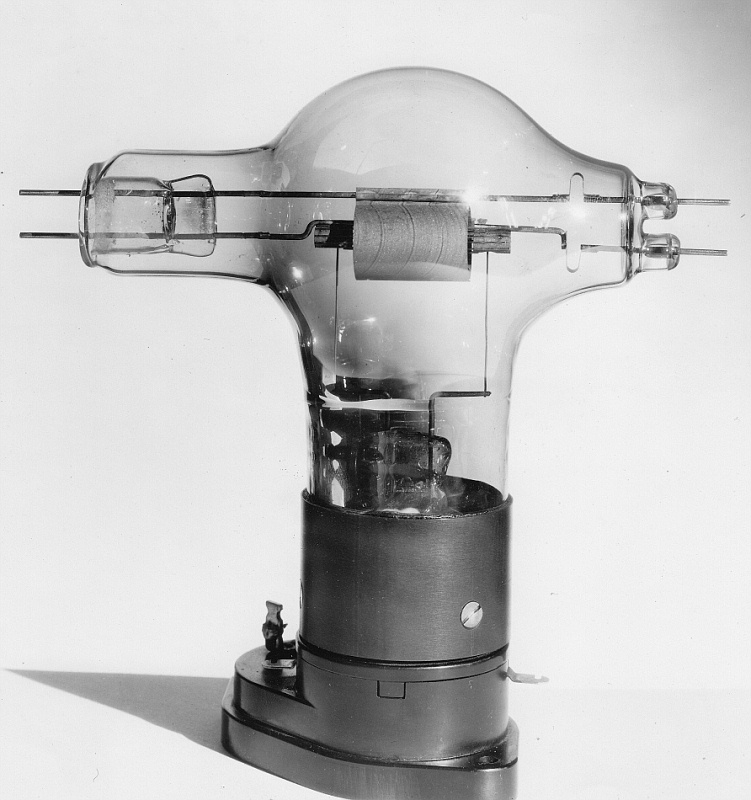
Barkhausen Oscillator, forerunner of the klystrons, re-invented by the Varian brothers at Palo Alto.
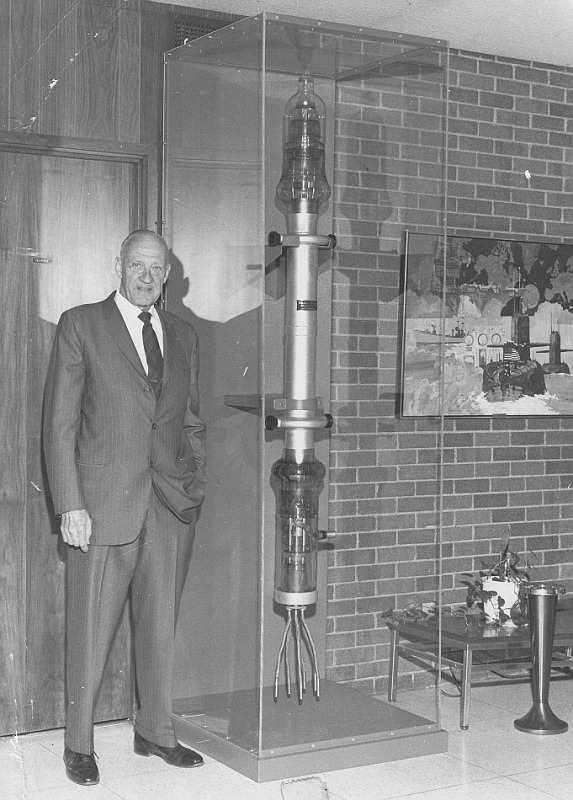
James O. Weldon (1905-1993), January 1978.
The tube featured on this picture is a water-cooled Western Electric 320A, designed for use as an oscillator, modulator, or amplifier at the higher power levels and high frequencies. It was used in a custom high power transmitter built by James O. Weldon of Dallas, Texas, for XERA, a Mexican station along the border with Texas.
US Patent 2,212,929 - High power discharge device (1940).
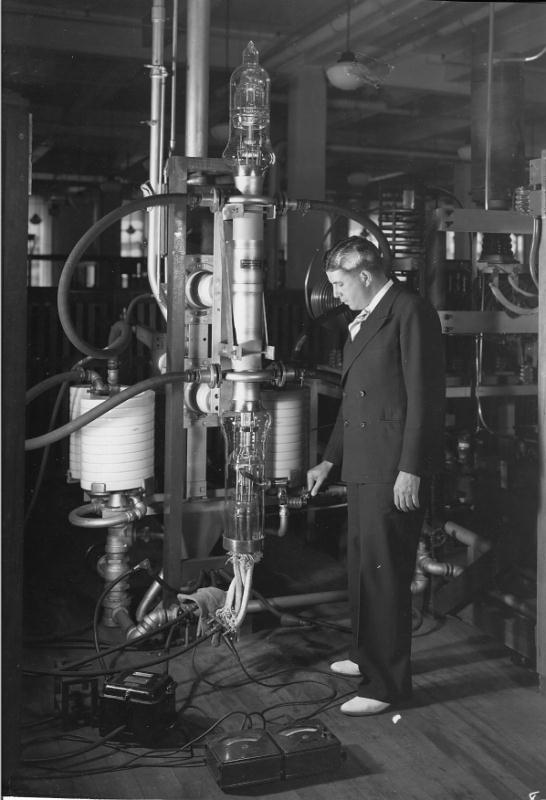
Clayton Koons testing a 320A water-cooled triode for XERA, a radio station in Mexico.
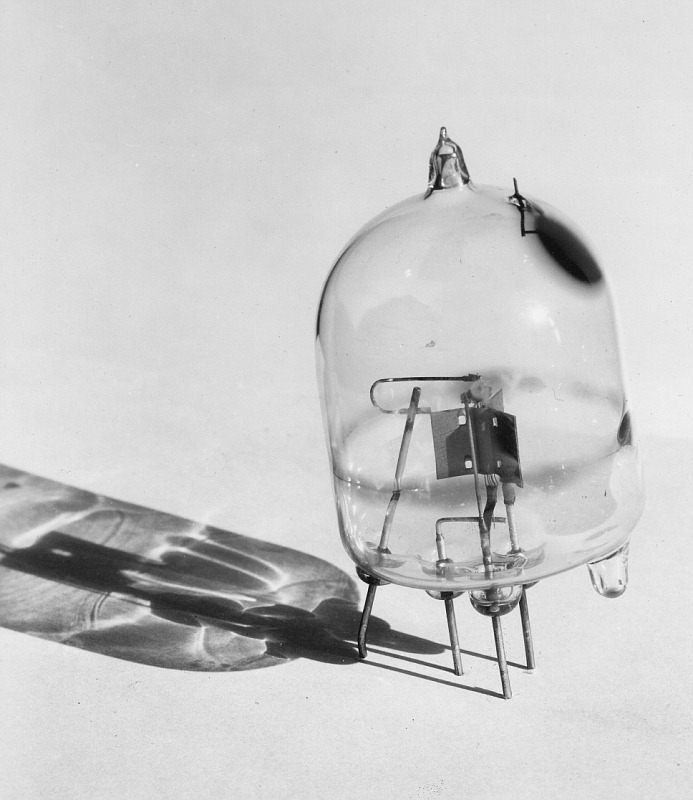
First working model of the 316A UHF triode.
First developed for radar equipment, the 316A was later used during World War II in the BC-645 (SCR-515) airborne identification friend-or-foe (IFF) transponder and the ABA Navy version.
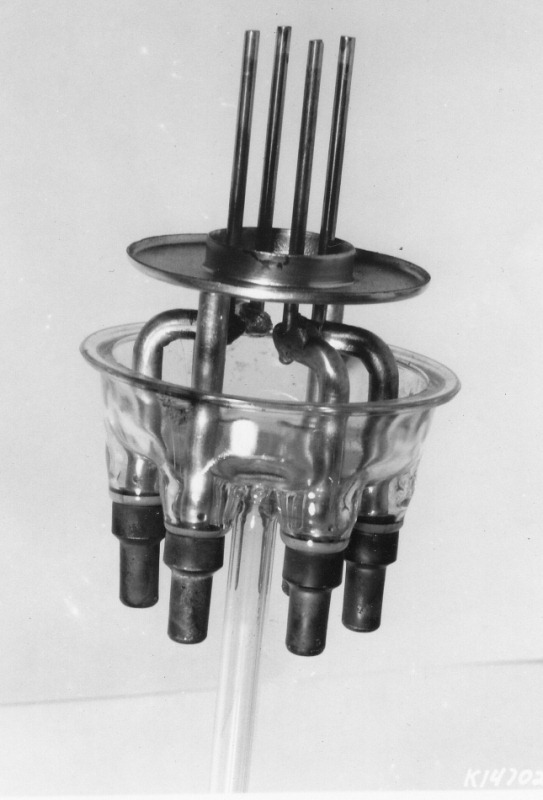
Transmitting tube internals.
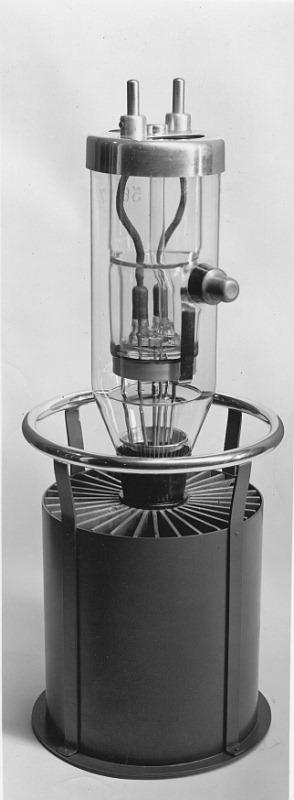
56?7 Transmitting tube.
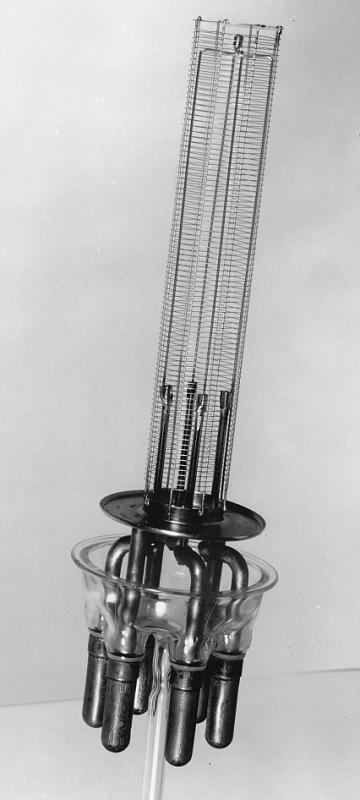
Water-cooled transmitting tube internals.

Large transmitting tubes.
Top left: 240B, a large water-cooled triode with a mu of 40 developed by Western Electric in 1935 and produced until 1951. It was used in the Overseas Wireless Telephone site in Dixon, California.
Top middle: 298A.
Top right: 116-Y.
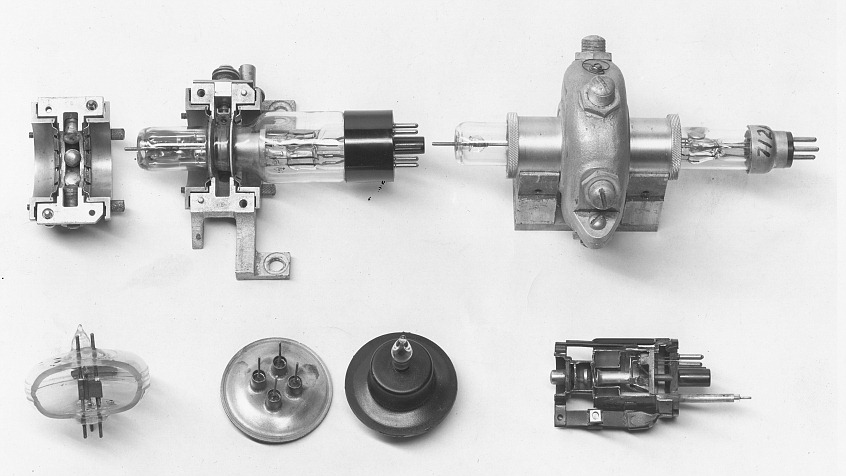
Klystrons and VHF tubes.
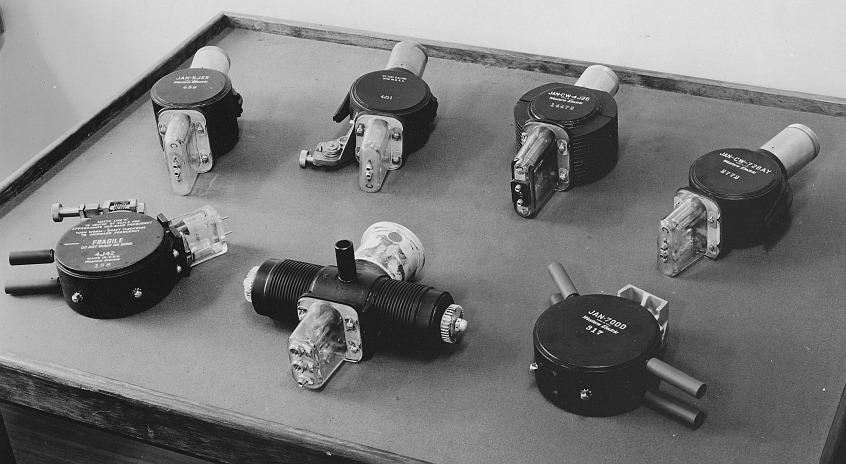
Magnetrons.
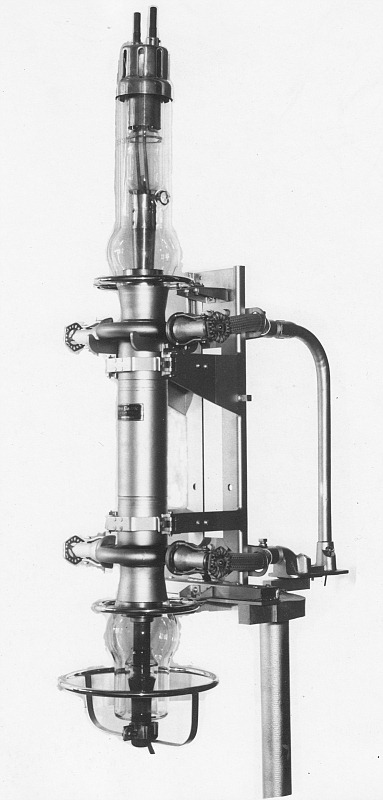
The 298A, a 100,000 watt, water-cooled triode.
This tube has a mu of 32 and a maximum frequency of 4 MHz.
The anode is cooled with four shielded hoses and clamps that also provide RF and HV connection.

The 298A water-cooled triode.
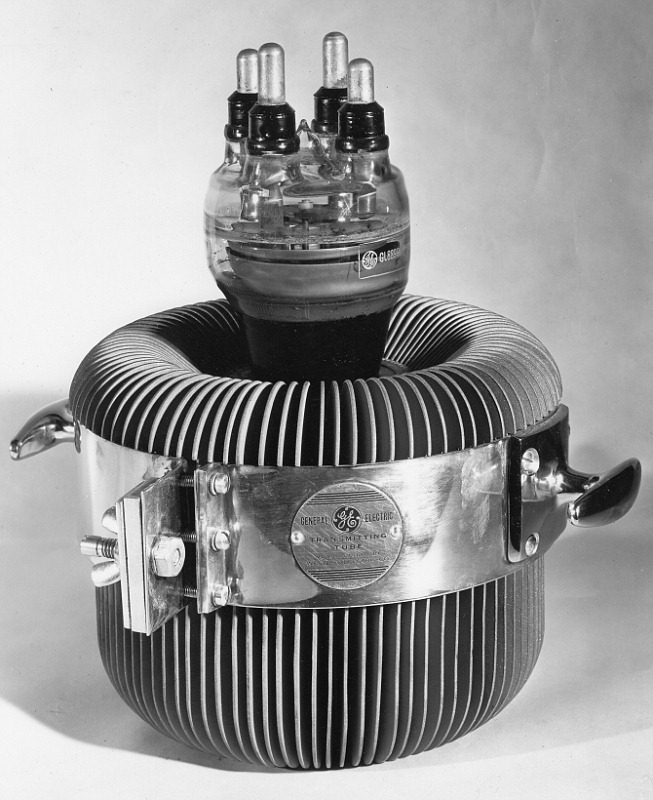
General Electric GL889A Pliotron.

DC138 = 357A Triode.
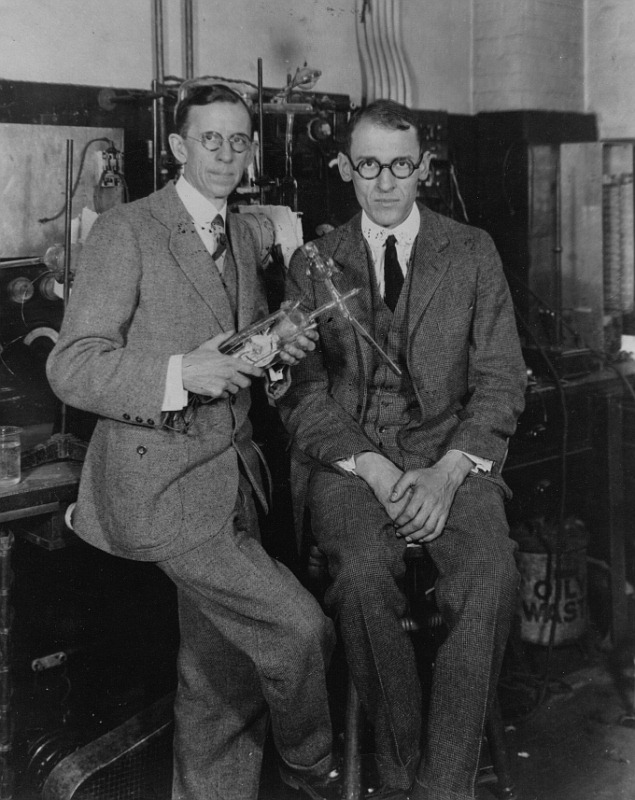
C.J. Davisson and L.A. Germer in physics lab with tube used in electron diffraction, 12/14/27.
At this site, the original location of Bell Telephone Laboratories, Davisson and Germer in 1927 performed the first direct demonstration of the wave-like behavior of elementary particles, predicted by L. de Broglie in 1923. The Davisson-Germer experiment provided crucial empirical evidence for the validity of the then rapidly evolving theory of quantum mechanics. In those years and subsequently many important scientific and technological discoveries were made at the same laboratory.
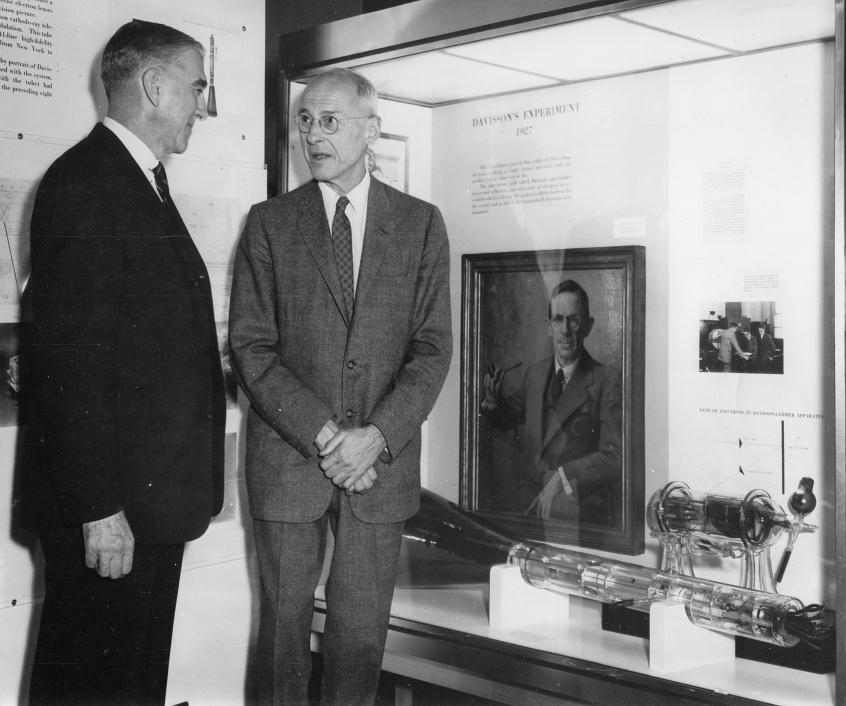
Davisson's Experiment.
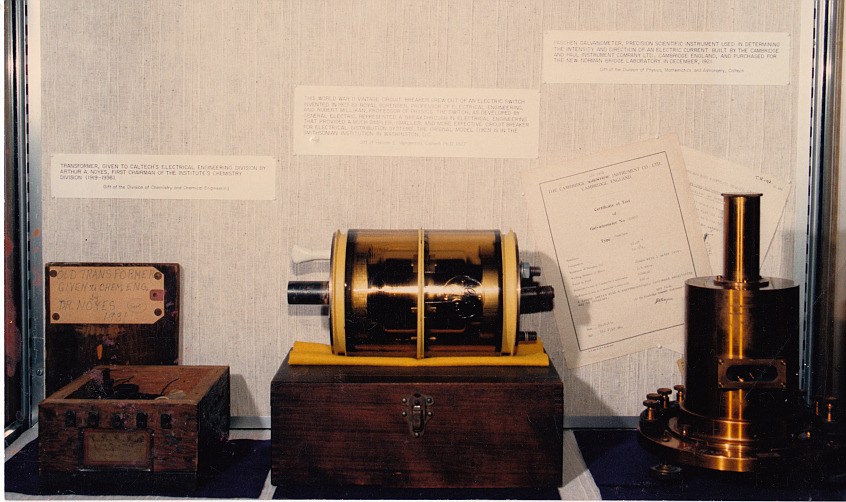
Left: Transformer, given to Caltech's Electrical Engineering Division by Arthur A. Noyes, first chairman of the Institute's Chemistry Division (1939-1936).
Middle: This World War II vintage circuit breaker grew out of an electric switch invented in 1923 by Royal Sorensen, Professor of electrical engineering, and Robert Millikan, Professor of physics. The switch, as developed by General Electric, represented a breakthrough in electrical engineering that provided a much simpler, smaller, and more effective circuit breaker for electrical distribution systems. The original model (1923) is in the Smithsonian institution in Washington, D.C.
Right: Paschen galvanometer, precision scientific instrument used in determining the intensity and direction of an electric current. Built by the Cambridge and Paul Instrument Company Ltd, Cambridge, England, and purchased for the New Norman Bridge Laboratory in December, 1921.
Le contenu de ce site est sous copyleft  The content of this site is under copyleft
The content of this site is under copyleft  Der Inhalt dieser Website steht unter Copyleft
Der Inhalt dieser Website steht unter Copyleft
